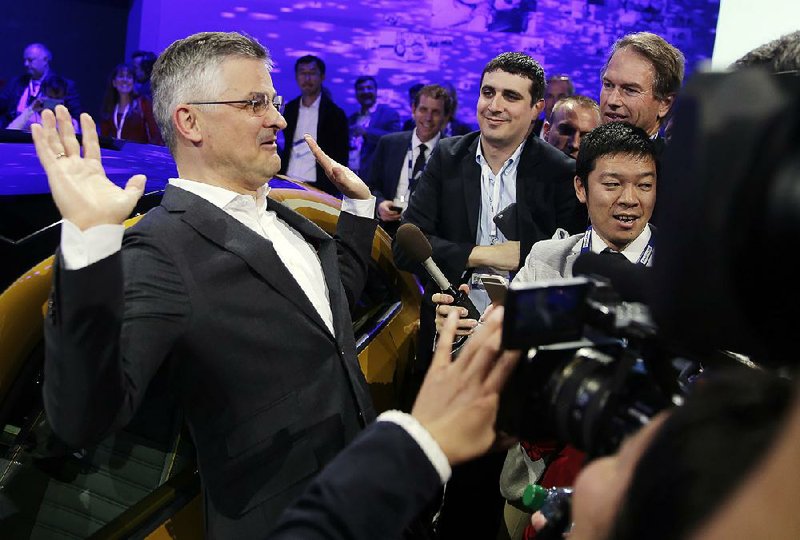DETROIT -- When Volkswagen submits a plan to fix emissions-cheating diesel engines today, it will have only two options for most of the cars.
It can install a bigger exhaust system to trap harmful nitrogen oxide, or it can retrofit a chemical treatment process that cuts pollution.
The bigger exhaust likely will hurt performance and gas mileage, angering car owners. But the chemical treatment, while saving acceleration and mileage, needs a clumsy storage tank and multiple hardware changes to work. In either case, almost a half-million cars would have to be recalled for the repairs.
Experts say both options will be expensive, perhaps so costly it will be cheaper to buy back some of the older models.
"I think they know right now how to do the fix," said Alan Baum, a consultant in Detroit who advises automakers on fuel-economy regulations. "The harder part of this is ... how do you actually execute it?"
VW had until today to submit a draft plan to fix four-cylinder diesels to the U.S. Environmental Protection Agency and the California Air Resources Board, the two agencies that forced the German automaker to admit to the cheating. The company was to meet with the agencies Thursday, with a final submission today. VW's board also is to meet today and may discuss the repairs.
The plan, which is likely to have several options for regulators to consider, must be tested by the agencies to make sure the fixes comply with pollution laws. Testing and installation could take more than a year.
In September, Volkswagen admitted about 482,000 U.S. cars with 2-liter diesel engines from the 2009 through 2015 model years have software that turns pollution controls on during government treadmill tests and shuts them off when not being tested. As a result, the cars emit 10 to 40 times the allowable limit of nitrogen oxide, a chemical ingredient of smog that can cause breathing problems.
The U.S. admission triggered a much larger one for the rest of the world: VW has said another 10.5 million cars worldwide have the same deceptive software and will need to be repaired.
In addition, the EPA has accused VW of cheating a second time, programming about 10,000 VW and Audi vehicles with larger six-cylinder diesel engines to emit fewer pollutants during tests than in regular driving. The company also has withdrawn its application to get emissions controls approved on four-cylinder diesels for the 2016 model year, and the government is investigating whether VW cheated on those.
Any recall would affect Jetta, Golf, Beetle, Passat and Audi A3 four-cylinder diesels. About 157,000 of those cars from 2015 plus 2012-14 Passats likely can be fixed with relatively simple software changes. But 325,000 of the cars from 2009 to 2014 will need the complex and expensive hardware fixes as well as software. VW U.S. CEO Michael Horn has said it could take a year or longer for those cars to be fixed.
The most likely fix for the bulk of the cars is a treatment system with urea, a chemical that's injected into the exhaust system that helps separate nitrogen oxide into harmless nitrogen and oxygen.
The company also could use a bigger nitrogen oxide trap, but engine settings would have to be changed to flush it out periodically, which would cut into performance and gas mileage.
John German -- senior fellow with the International Council on Clean Transportation, the group that sponsored the on-road testing that exposed the cheating -- said the older VWs were not designed to handle urea treatment systems, making the solution a complex challenge for engineers.
Space must be found for the urea storage tank, possibly taking precious trunk room. Urea can freeze, so the storage tank must be kept warm. The urea tank has to be refilled periodically, so a refilling method has to be designed and installed. Lines have to be run to take urea from the tanks to the exhaust system and an injection system added, said German, who estimates that hardware, design and installation costs likely would exceed $1,000 per car.
"They probably didn't plan on nitrogen oxide after-treatment when they designed the floor pan," German said.
Volkswagen wouldn't comment Thursday on a possible fix. A spokesman said the company is cooperating with the agencies. The EPA and the California Air Resources Board would not comment.
Business on 11/20/2015
